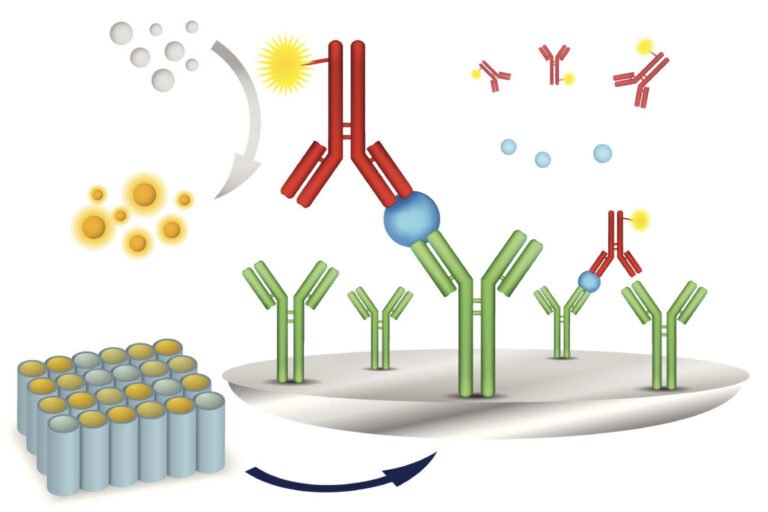Line Immune Assay (LIA) Technique for Diagnostic Applications
Precision, accuracy, and efficiency have become the cornerstone of effective disease management and monitoring in the ever-evolving diagnostics landscape. Among the advanced methodologies, the Line Immune Assay (LIA) technique is a powerful tool for detecting and diagnosing a wide range of infectious diseases and autoimmune disorders.
What is Line Immune Assay?
The Line Immune Assay (LIA) is a qualitative or semi-quantitative immunoblotting technique used in diagnostics. It is designed to detect specific antibodies in a patient’s serum or plasma, offering detailed insights into the presence of infections or autoimmune responses.
LIA shares similarities with the widely known Western blot technique, but its main distinction lies in its format and ease of use, making it more suitable for high-throughput diagnostics. LIA is particularly effective in confirming diseases where antibody detection is crucial, such as HIV, hepatitis, Lyme disease, and various autoimmune disorders.
How Does LIA Work?
The core principle of LIA involves antigen-antibody reactions, where disease-specific antigens are immobilized as discrete lines on a nitrocellulose membrane. Here’s a simplified breakdown of the process:
- Antigen Immobilization: The antigens related to the disease of interest are printed in distinct lines on a test strip. These antigens may include proteins, peptides, or other disease markers.
- Sample Incubation: The patient’s serum or plasma sample is added to the strip. If specific antibodies (e.g., IgG or IgM) are present in the sample, they will bind to the corresponding antigens immobilized on the strip.
- Detection: Following the incubation, a secondary antibody conjugated to an enzyme (often horseradish peroxidase) or other detection agents is added. This secondary antibody binds to the patient’s antibodies that have attached to the antigens.
- Visualization: Upon the addition of a substrate, the enzyme catalyzes a reaction that produces visible lines on the strip. These lines indicate a positive reaction, confirming the presence of disease-specific antibodies.
Advantages of Line Immune Assay
- High Sensitivity and Specificity: LIA offers improved sensitivity and specificity compared to traditional screening tests like ELISA. Its ability to detect multiple antibodies simultaneously enhances diagnostic accuracy.
- Multiplex Testing: LIA can test for several antigens in a single strip, making it ideal for multiplex testing. This reduces the time and cost associated with separate tests.
- Confirmatory Test: Due to its precision, LIA is often used as a confirmatory test in cases where initial screening tests may produce false positives or inconclusive results.
- Semi-Quantitative Interpretation: LIA allows for the semi-quantitative interpretation of results based on the intensity of the lines, providing clinicians with an indication of the antibody concentration in the sample.
- Ease of Use: LIA is easier to perform and interpret than some other blotting techniques, making it accessible to a wider range of laboratories.
Applications in Diagnostics
LIA is widely used in infectious disease diagnostics and autoimmune disorder testing:
- Infectious Disease Testing: LIA is frequently employed in the confirmation of HIV and hepatitis infections. It is also used in diagnosing syphilis, Lyme disease, and tuberculosis.
- Autoimmune Disease Detection: LIA has proven effective in diagnosing systemic autoimmune diseases such as systemic lupus erythematosus (SLE), rheumatoid arthritis, and scleroderma by detecting disease-specific autoantibodies.
- Allergy Testing: LIA can be used to detect specific IgE antibodies in patients, providing crucial insights into allergic reactions and sensitivities.
Future of LIA in Diagnostics
With advancements in biotechnology, the Line Immune Assay is evolving toward becoming more automated and cost-effective, improving accessibility for routine diagnostics. Innovations are underway to make the technique more quantitative and capable of detecting lower concentrations of antibodies, thus further enhancing its diagnostic value. Moreover, the integration of LIA with other molecular diagnostic tools promises a future of more comprehensive and personalized medicine.
Conclusion
The Line Immune Assay technique has emerged as an invaluable tool in the diagnostic field, offering high specificity, sensitivity, and the ability to confirm complex disease profiles. Its application in infectious disease testing and autoimmune diagnostics ensures that it remains a cornerstone in both clinical and research settings, contributing to more accurate diagnoses and better patient outcomes.
At Amindo Biologics Pvt. Ltd., we are committed to providing cutting-edge diagnostic solutions, including advanced LIA kits, that support the global healthcare community in delivering precise and reliable diagnostic results.







